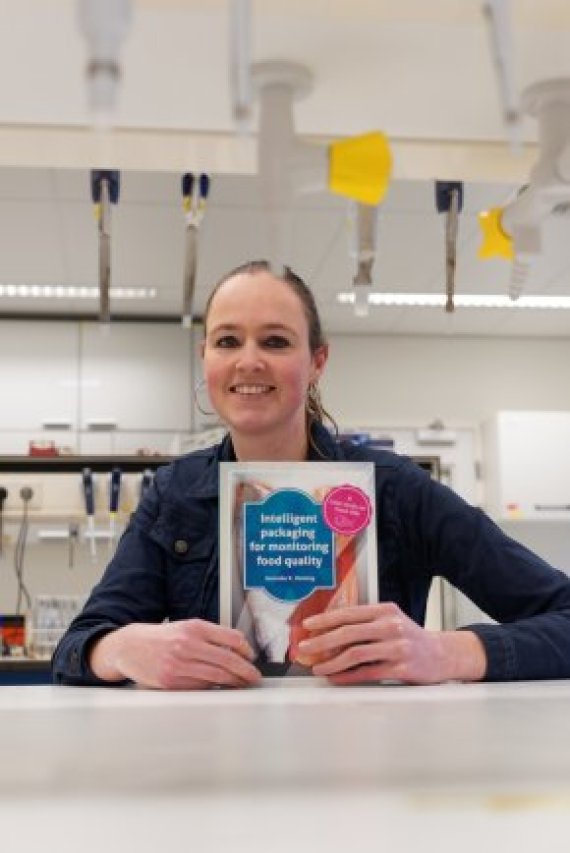Eight covers were nominated by Resource just before Christmas for the Cover Prize of 2014. Jenneke Heising’s cover went into the lead from the start, and stayed there. Of the 1274 votes cast, Heising got 609, a full 48 percent. Trailing behind her came Xiangdan Meng (Female Farmers in China, 17 percent) and Bob Mulder (Chronic illness, 13 percent) in second and third place.
What is smart packaging, actually?
‘Smart packaging provides information about the quality of the product in the packet. In this case, about how long fish stays fresh. I developed a method of predicting the freshness of fish using measurements made by a sensor in the packaging.’
Your cover shows a packaged piece of fish. But I can’t see a sensor?
‘No, there isn’t one. I worked with a lab setup, a bell jar with electrodes for taking measurements in a basin of water. The cod lay next to the basin of water. The electrodes measure the conductance of the water. Gasses such as ammonia and trimethylamine which are released from the fish dissolve in the water and change its conductance. The sensor will look like a kind of minichip in the end, one which you could scan with your smartphone, for instance.’
Cod? But isn’t the fish on the cover…?
‘Salmon, yes. The picture looked better with salmon.’
How did the cover come about?
‘Through the printer I got in contact with graphic designers Inzicht Grafisch Ontwerp. I talked to the designer about my thesis. I wanted something to do with packaging on the cover. But how do you show that the packaging is smart? It’s not that easy. It’s the label that shows it. I chose the colours myself. The design was right first time, actually.’
Did you do a lot of lobbying?
‘Yes. We sent it around the department and put it on LinkedIn and Facebook. I even made a Twitter account for it. Apparently it worked. Even my thesis has already been downloaded from the Forum library 800 times.’
Will there be a follow-up to the study?
‘At Food Quality and Design we want to do more research on the interactions between packaging and food. For example, I am now setting up a study on so-called active packaging which can influence the food’s shelf life. Packaging that can capture gases given off inside it, for instance. Or antimicrobial packaging in which substances released from the packaging extend the product’s shelf life.’

